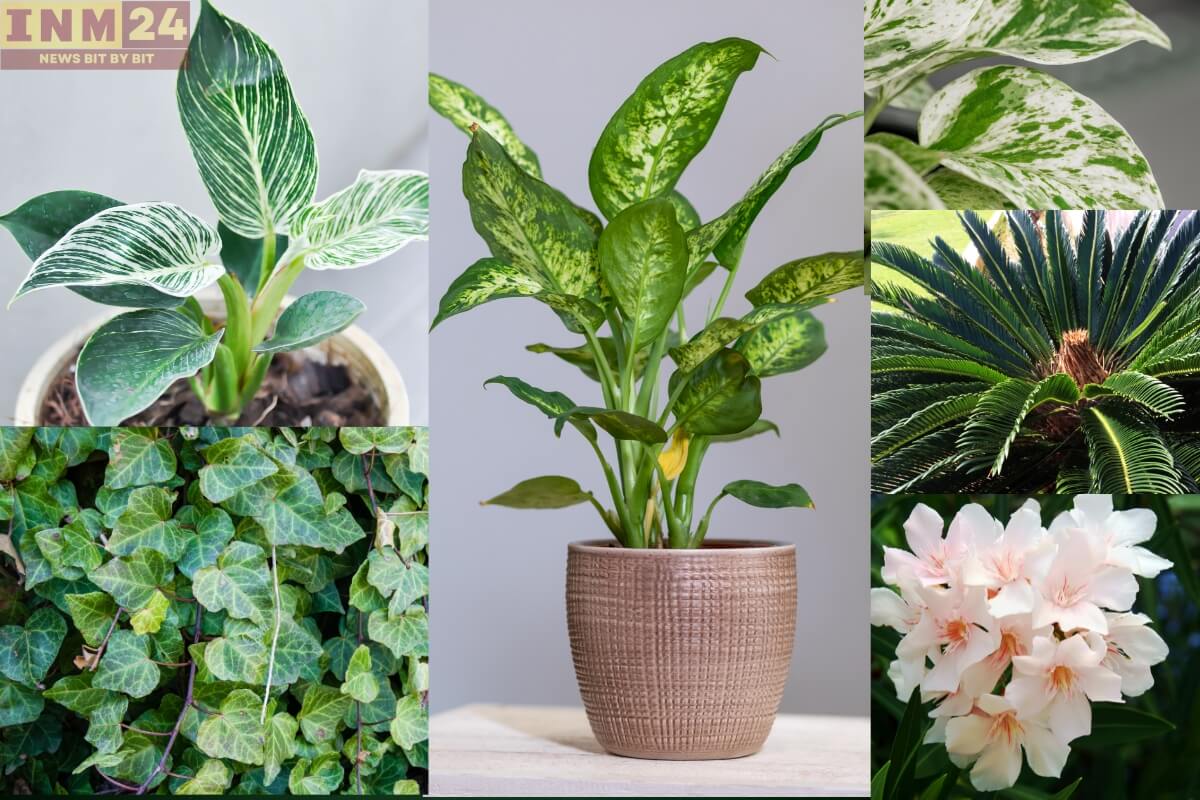While indoor plants are often appreciated for their aesthetic appeal and ability to purify the air, it’s essential to be mindful of the potential risks associated with certain varieties. Some plants, while visually appealing, can be toxic if ingested or even touched. To ensure the safety of yourself, your family, and your pets, it’s crucial to be aware of these poisonous plants and avoid keeping them in your house.
Dieffenbachia (Dumb Cane)
Dieffenbachia, commonly known as Dumb Cane, is a popular houseplant appreciated for its lush foliage and ease of care. However, all parts of the plant contain calcium oxalate crystals, which can cause intense burning and swelling of the mouth and throat if ingested. It’s essential to keep Dieffenbachia out of reach of children and pets to prevent accidental ingestion.
Philodendron
Philodendrons are beloved for their trailing vines and heart-shaped leaves, making them a common sight in many households. However, these plants contain calcium oxalate crystals, similar to Dieffenbachia, which can cause irritation and swelling of the mouth and throat if ingested. Exercise caution when handling Philodendrons and ensure they are placed out of reach of children and pets.
Pothos (Devil’s Ivy)
Pothos, also known as Devil’s Ivy, is prized for its trailing vines and variegated foliage, making it a popular choice for hanging baskets and shelves. While Pothos is relatively low-maintenance, it’s important to note that the plant’s leaves contain calcium oxalate crystals, which can cause irritation and discomfort if ingested. Keep Pothos plants away from curious pets and children to prevent accidental ingestion.
Oleander
Oleander is a beautiful flowering shrub known for its vibrant blooms and tolerance to various growing conditions. However, all parts of the Oleander plant are highly toxic if ingested, containing compounds known as cardiac glycosides, which can cause serious health issues, including cardiac arrest, if ingested in large quantities. Avoid keeping Oleander plants indoors, especially if you have pets or small children.
Sago Palm
The Sago Palm is a popular choice for indoor landscaping, prized for its exotic appearance and resilience. However, the plant’s seeds, also known as cycasin, are highly toxic if ingested, causing symptoms such as vomiting, diarrhea, and even liver failure in severe cases. Exercise caution when handling Sago Palm plants and avoid placing them in areas accessible to pets and children.
English Ivy
English Ivy is valued for its lush foliage and ability to thrive in low-light conditions, making it a popular choice for indoor gardens and green walls. However, English Ivy contains compounds known as polyacetylene compounds, which can cause skin irritation and gastrointestinal upset if ingested. Keep English Ivy out of reach of pets and children, and wear gloves when handling the plant to avoid skin irritation.
While indoor plants can enhance the beauty and ambiance of your home, it’s crucial to choose varieties that are safe and non-toxic, especially if you have children or pets. By being aware of the potential risks associated with certain plants and taking appropriate precautions, you can enjoy the benefits of indoor gardening while ensuring the safety of your loved ones.
